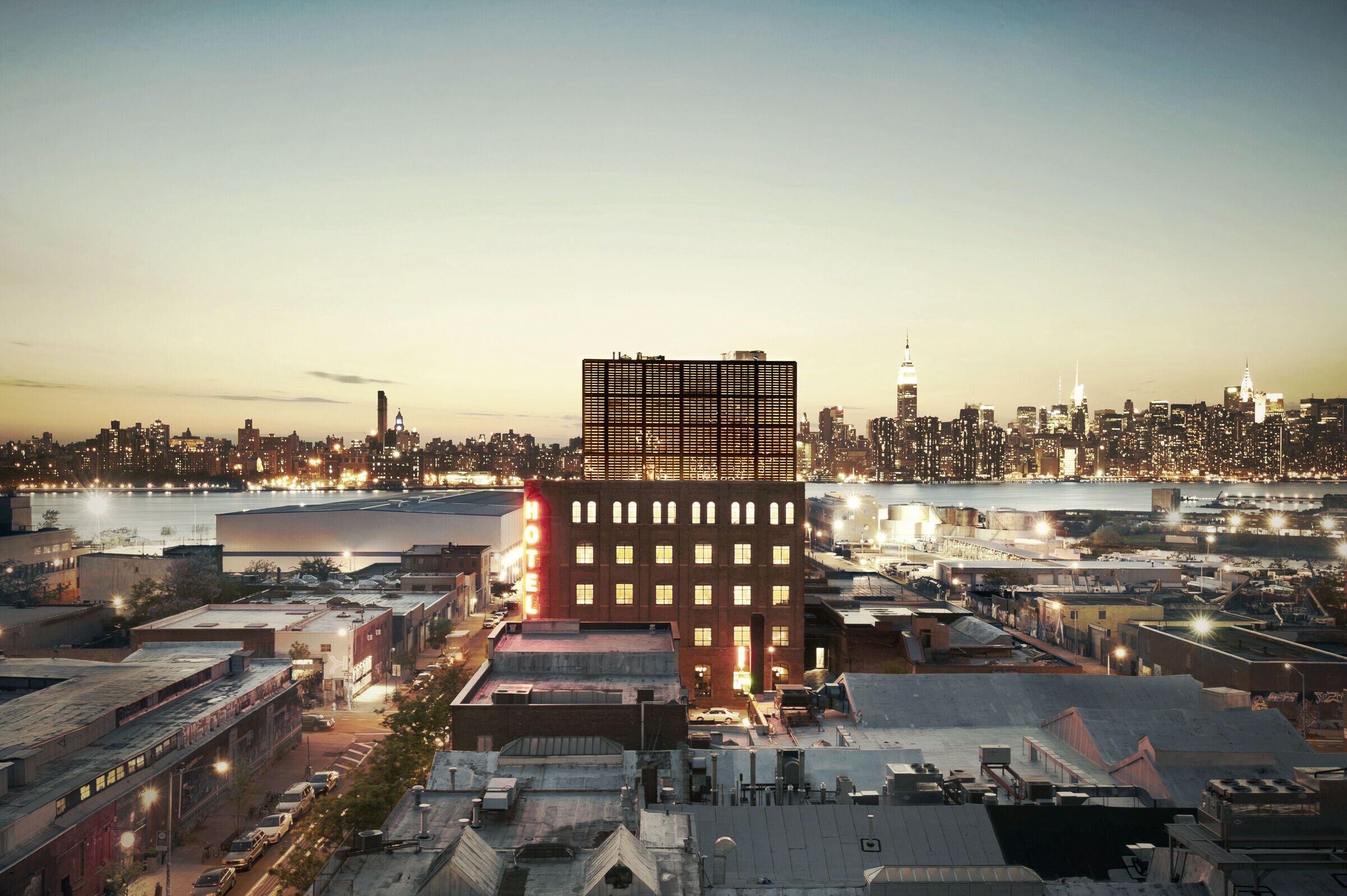To convert this 1901 cooperage into a boutique hotel, a contemporary addition was built on the roof of the restored brick warehouse. Up-to-date mechanical systems were integrated into the historic structure, and every room was designed to enhance the building's post-industrial spaces and materials.


From the earliest design sketch, the Wythe Hotel project comprised three critical elements: the restoration of the original building, a contemporary roof addition, and an iconic new sign. Williamsburg is not a designated historic district, but the brick cooperage is exactly the type of post-industrial artifact that draws people to Brooklyn, so it was vital to retain that sense of authenticity while restoring the building. This was not easy. The building's wood ceilings were in disrepair and its brick walls were damaged, poorly painted, or defaced with graffiti. For months, layer after layer of paint and grime were artfully scraped and sandblasted away from the original wood and brick to capture the right amount of historic residue. The process was painstakingly deliberate, and the resulting palimpsest reveals traces of different eras in the building's history.


Far less subtle was the removal of an entire 20-foot bay from the west side of the brick building. In its place, a glass window wall, modeled after the original factory windows, encloses the building to satisfy mandatory light and air requirements while creating sweeping views of Manhattan from the hotel rooms. This gridded glass façade extends up past the roofline of the original building to wrap the abstract rooftop addition, an airy four-story glass block that starkly contrasts the solid brick mass below. The rooftop bar has become a popular nightlife spot, thanks in large part to its panoramic views of Brooklyn and the Manhattan skyline.The monumental 50 foot-tall custom marquee is by local artist Tom Fruin. According to local myth, the concave corner that now broadcasts the hotel’s presence was originally used to lower barrels down the building.


Since opening, the Wythe has become a destination for visitors and locals alike, and is often cited as a model of how to revitalize industrial buildings and environments in a manner that respects history while also expressing a continuum of experience and memory.






























